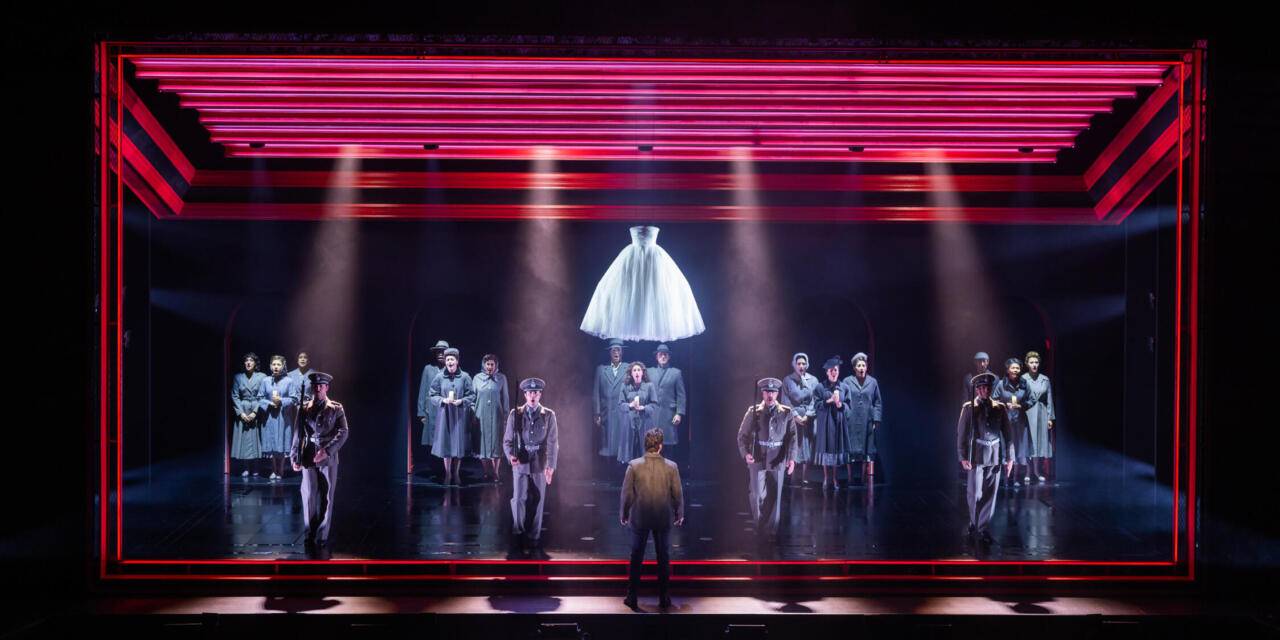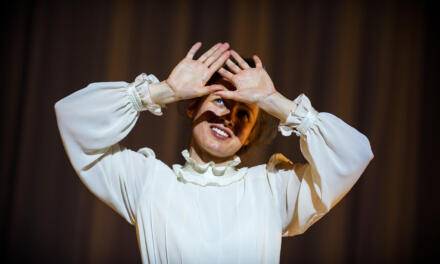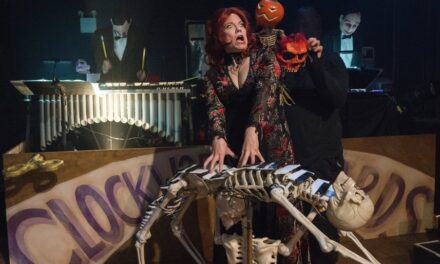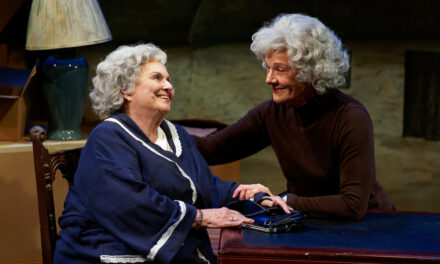Tim Rice became interested in the biography of Eva Perón – the wife of the famous dictator Juan Perón – in the early 70s of the past century. Most of the musical’s book, Tim wrote while in Argentina, where he traveled specifically to get “imbued” with the spirit of the country, where the action of his script takes place. He introduces a certain Che as the storyteller – the prototype of Ernesto Che Guevara. Che is the one who asks the most important question: Who was the legendary Evita in reality?
The book by Tim Rice contains the life story of Maria Eva Duarte de Perón – also known as Evita: the period from when she was a fifteen-year-old girl leading up to her death at the age of thirty-three. Over the years, she was an actress, a model, and a radio host. However, she was only able to conquer Buenos Aires when she became the president’s wife. In such a capacity, she acquired a special place in the political establishment. In the eyes of her compatriots, the leading roles in popular films made a substantial impact on the creation of a proper image of a woman, who cares deeply about the interests and wellbeing of ordinary people. She quickly became the leader of the public movement which fought for the rights of women, burdened with hard work. Furthermore, having turned into an idol for millions of Argentinians, Eva Perón took on the role of a trendsetter, an ambassador of peace beyond the borders of Argentina, and a charitable guru, who would build homes for the poor. The memory of Evita lives in the hearts of the compatriots and even today one can often hear the words, which sound more like a prayer:
Santa, Santa Evita
Madre de todos los niños
De los tiranizados
De los descamisados
De los trabajadores
De la Argentina –
This is from the song Santa Evita, which in the musical is performed by Che and the children’s choir in Spanish. As for the main aria of the musical – Don’t Cry for Me, Argentina, it shall forever remain bound to Eva’s name.
The very first actress to play the part of Evita in the musical was Elaine Paige, who shone brightly on the London stage in 1978 at the premiere of the musical. Her Eva successfully reflected the perception of the authors of the show – they wanted to present Eva as an angel. A year later, the musical opened in Los Angeles with Patti LuPone playing Evita. When the musical arrived on Broadway, Patti continued as Evita, making her contribution to the musical’s win – seven Tony nominations, including Best Performance by a Leading Actress. Patti LuPone was quite a different Evita, there was nothing “angelic” about her…
In 1996 Andrew Lloyd Webber’s musical was made into a movie. Madonna was cast as Evita, and she is considered the unquestionable embellishment of the film by Alan Parker. In any case, to this day it is Madonna’s most outstanding performance in her humble filmography. Despite the all-star cast, the director failed to maintain the theatrical spirit of the piece by Webber and Rice. Perhaps because of the abundance of ensemble scenes, or several changes to the major plot lines and text. As well as some adjustments to the music score. The song You Must Love Me, written especially for the movie, brought its creators and singer an Oscar but was never able to surpass Don’t Cry for Me, Argentina in popularity.
Another movie that came out that same year Eva Perón: The True Story by the Argentinian director Juan Carlos Desanzo was also autobiographical but focused only on the last year of the heroine’s life, during which she fought for the position of the vice president of Argentina, at the same time attempting to overcome a deathly malady. The role of Evita was played by an Argentinian actress – Esther Goris. Her Evita in this movie does not evoke sympathy, at least in the beginning and her character isn’t even close to the “angelic” one as in the musical: overly expressive, emotionally cold, ruthless, possessed by political ambitions, motivated by the psychological traumas of her past. The latter is represented by the tragic death of her father, issues in school and professional failures, conflicts with the aristocracy which couldn’t forgive the “parvenu” of her lowly social status by origin, as well as sarcasm that she displayed toward them, foul language in her public speeches. Perhaps, the Argentinian creatives know best, and Evita was truly like that.
Madonna’s Eva was a more tender, more positive character, than Esther Goris’s Evita. It is obvious, that in this role Madonna did her best to reconcile her own scandalous reputation. It was at that point in her career when the press emphatically worked on assigning her an image of a nymphomaniac, who built her career through the beds of influential people in the entertainment business. She badly needed some sort of rehabilitation, and the “angelic” image of Evita came in just in time. Madonna received a Golden Globe Award in the Best Leading Role in a Musical nomination. And her seventh solo album that followed called Ray of Light (1998), in many ways thanks to the role of Evita, was presented to the public as the “spiritual rebirth” of the singer.
No matter what Eva Perón was truly like, whether her character was historically accurate in the musical by Webber and Rice – one can argue, but it is impossible to deny the fact that the song Don’t Cry for Me, Argentina performed by Madonna turned into a hit for all ages. This aria reflects Evita’s vulnerability, as well as her steel will, inner strength, and the caliber of her personality. This aria is Evita’s confession, her last speech addressed to her people. The rich symphonic orchestration gives this confession even more meaning and makes it even more final. It is the finale of the musical, but also the terminally ill heroine saying her farewell to life. In the refrain, denying that she lived for fame and riches, she sings:
“…I love you and hope you love me.
Don’t cry for me Argentina…”
This famous single was performed by various singers, who have all added something new and personal to it: Tom Jones, Sinead O’Connor, Julie Covington, Il Divo, and others. But the passionate version by Madonna is truly special.
In Andrew Lloyd Webber’s music score, many different music styles coexist with the Latin-American motives. Choreography holds a special place in this show. The ensemble represents a collective character – the people. The people were very important, according to the original vision and idea of the authors as well as the choreographer Larry Fuller. We spoke about the role and place of dance in the musical with Valeria Solomonoff, who choreographed the most recent production of Evita in New York, which ran at the New York City Center in November 2019.
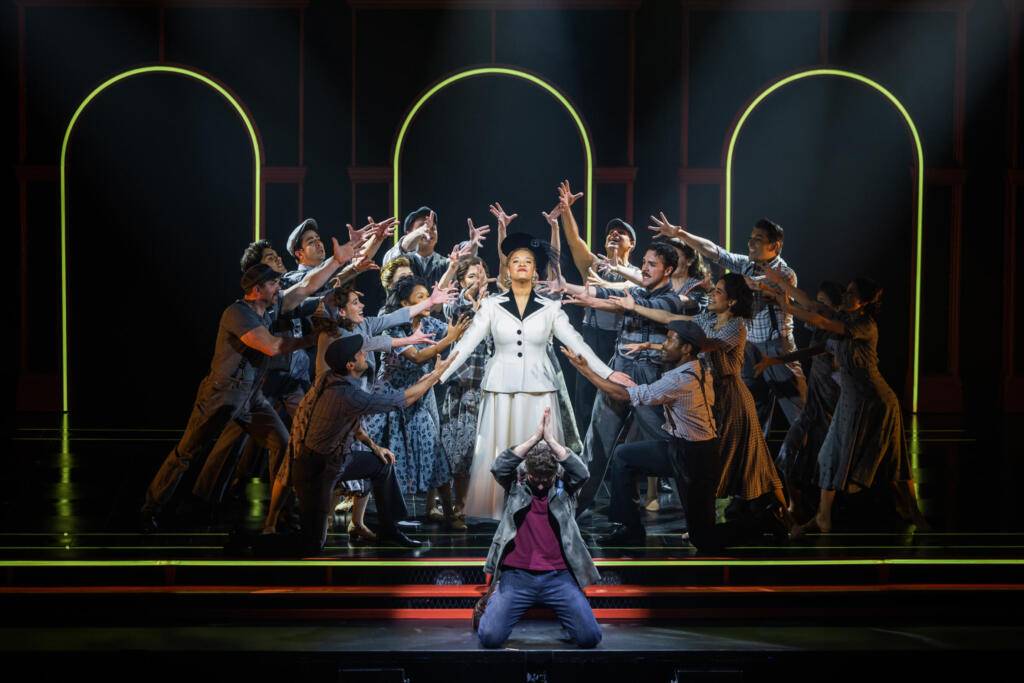
Musical Evita New York City Center, 2019. (C) – Shereen Pimentel as Evita and Company/ Photo credit by Nile Scott Studios.
Lisa Monde: Evita is one of the longest-running shows out there. What was the role of dance in the musical Evita? Both on stage and on screen? I remember how different the production was in those two mediums.
Valeria Solomonoff: What Sammi Cannold [director] wanted the role of dance to be in our production – was to give the context of the real culture of Argentina, filling in the blanks of the text, and giving emotional weight in places where it was missing. Evita matters to me because she was the source of so much transformation in society and my country. The dance needed to reflect how one action can ripple through an entire community. Argentina is a place where we touch one another, where we look at one another, where social interactions are very important. That is also why we dance tango. It is all about acceptance, a way of saying “I see you, you see me,” tango brings people closer. The dance in the show must reflect the bond among people and the enormous power of the crowd when mobilized by its idol.
LM: So, in the musical, the dance brings people together?
VS: Yes, it is all about bringing people together. Understanding the uniqueness of Evita means understanding the uniqueness of the context, in which she existed.

Musical Evita Rehearsal. (L) – Valeria Solomonoff, choreographer, (C) – Sergio Martin Almiron, (R) – Jonatan Lujan/ Photo credit by Maria Baranova
LM: I know that the choreography has changed, from the original production to all the different incarnations… What was different about your choreography in Evita? How did you create it? What were the major changes in the dance numbers that you worked on?
VS: I think we just really focused on the context, you can’t change the music or the words. So, we wanted the dance to reflect the complexity of the people as the character and what feelings it evoked in them. The main difference in our production I think is the use of tango, milonga, and vals. Tango encompasses three styles – milonga, tango, and vals, which is tango-waltz. We had an opportunity to portray the vals in the Waltz of Eva and Che. Buenos Aires is written more like samba and samba is Brazilian of origin, but what we did in our choreography was milonga, which is the more rural style of tango. It is happier, rustic, and suits the grounded and powerful energy of the workers. At times the choreography had to represent devotion, danger, ecstasy, and passion. Dance allows you to synthesize complex ideas, and helps you get into the right emotional place quicker, so the emotional note must be established by the dance. We did a lot of work as a creative team to find these emotional moments.
LM: You’ve mentioned that you used three variations of tango in the production that you worked on, did you keep any choreography from previous productions, or this was a completely new take on it?
VS: It was all new. Sometimes we would study how things were done before, we liked the division between the military, the aristocracy, and the workers – we used it as a reference. But it was necessary to just start from scratch. The only choreography that didn’t come from us was The Art of The Possible, which was originally developed by our director Sammi Cannold.
LM: The ensemble in Evita represents the people, who are a community, that are experiencing different feelings, they are portraying different moods through the dance. The dance is something that brings them together. The ensemble is extremely connected in this show, even when they separate to portray different characters – they are still very much united.
VS: Yes, you see the character of Evita through the ensemble’s reaction, whether it is devotion or rejection. There was a tremendous resistance to her. She had a lot of pushback. One of my favorite numbers is Peron’s Latest Flame. It was important to give a sense of the cruelty Eva endured, through movement.
LM: In Evita the main characters must sing and dance at the same time as they are performing the musical material which is not easy – how did the leading actors prepare to do both?
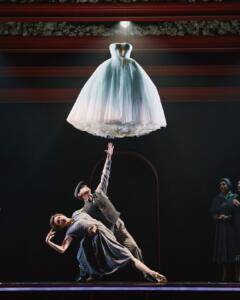
Musical Evita New York City Center, 2019. (C) – Sergio Martin Almiron and Leah Barsky/ Photo credit by Emilio Madrid
VS: I am so in awe of musical theatre artists and particularly of our lead performers! Our Eva – Shereen Pimentel – learned choreography instantly. She is the fastest learner I’ve ever seen. I don’t know how she does it – she is a superb singer and then she does everything else amazingly too! One of the main lessons that I’ve learned as a choreographer through this process was the transformation of the choreography. When we started, I kept thinking that I needed to simplify things, for example, the performers couldn’t have their heads down because they had to sing. And now I’ve learned: less is more – there’s a lot you don’t need, you just figure out what is absolutely indispensable. What is going to heighten the moment and not be a distraction? When you work with the leads – you are choosing what is going to serve them and not distract them.
LM: I know that in many interviews, Tim Rice and Andrew Lloyd Webber referred to Evita as one of their most prominent works. But they had a very different attitude towards the character Evita – Webber was not her biggest fan and yet Tim Rice praised her. For you, as someone who worked on the musical Evita – how do you feel about Eva as the character?
VS: Evita had such drive, such grit, such passion. You need to choose your perspective – was she manipulative and narcissistic, or was she driven against all odds by her sense of justice and empathy? What is truly remarkable is that when Eva became the wife of the president, she didn’t abandon her ideals, but she worked tirelessly to create schools, hospitals, and special programs for women and children. She had her own way of doing things, probably a bit despotic but also efficient. She wanted to give things to people that would build their dignity. The examples are many. Everything she gave was of the best quality. But in her crusade for social justice, she was personalistic, I believe, also narcissistic – what she established wasn’t enough to keep people afloat after her passing.
LM: Evita transformed the lives of so many people for the better. Is that why people remember her fondly and she became such an important “historical figure?”
VS: I think Evita is a tragic figure, she just burnt out. She chose her own sacrifice. The story in the musical is fictionalized, of course. In the 40s there was a huge pushback to Eva due to her upbringing that exposed Argentina as a classicist country. One thing is clear – she opened the lid… The hate against Eva was out of measure, she must have been doing something right to get so much reaction from people…
LM: Do you think Evita will be coming back to the New York stages?
VS: I hope so.
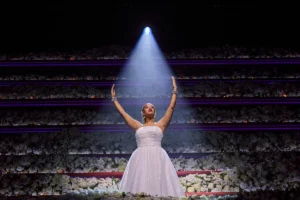
Musical Evita New York City Center, 2019. Shereen Pimentel as Evita / Photo credit by DJ Corey
In 2006, twenty years after the West End production closed, a new version of the musical came to be, directed by Michael Grandage, Elena Roger played Eva. Her fellow compatriot –Valeria Lynch – already played Evita in the Mexican production of the musical. In 2012 Elena Roger once again graced the stage as Evita, however this time, the revival came to Broadway. There have been two more West End revivals since and an international tour (2014, 2017). In 2019 Evita came to New York City Center for a limited run. In 2023, dedicated to the musical’s anniversary, Evita was performed at the Theatre Royal Drury Lane in London.
In various interviews, Andrew Lloyd Webber and Tim Rice both referred to Evita as their best creative work, their best collaboration. Even though they felt differently about the leading character of their story: Webber considered her “an unpleasant character,” and Rice admired Eva and felt that her popularity in the English-speaking world was well earned, the popularity that she gained due to the work of the two geniuses – Andrew Lloyd Webber and Tim Rice, who composed a beautiful ode to Eva Perón – is incomparable. Having taken the book The Woman with the Whip by Mary Main, they created a perfect example of a drama-musical, which will forever remain an important part of musical theatre history.
This post was written by the author in their personal capacity.The opinions expressed in this article are the author’s own and do not reflect the view of The Theatre Times, their staff or collaborators.
This post was written by Lisa Monde.
The views expressed here belong to the author and do not necessarily reflect our views and opinions.

